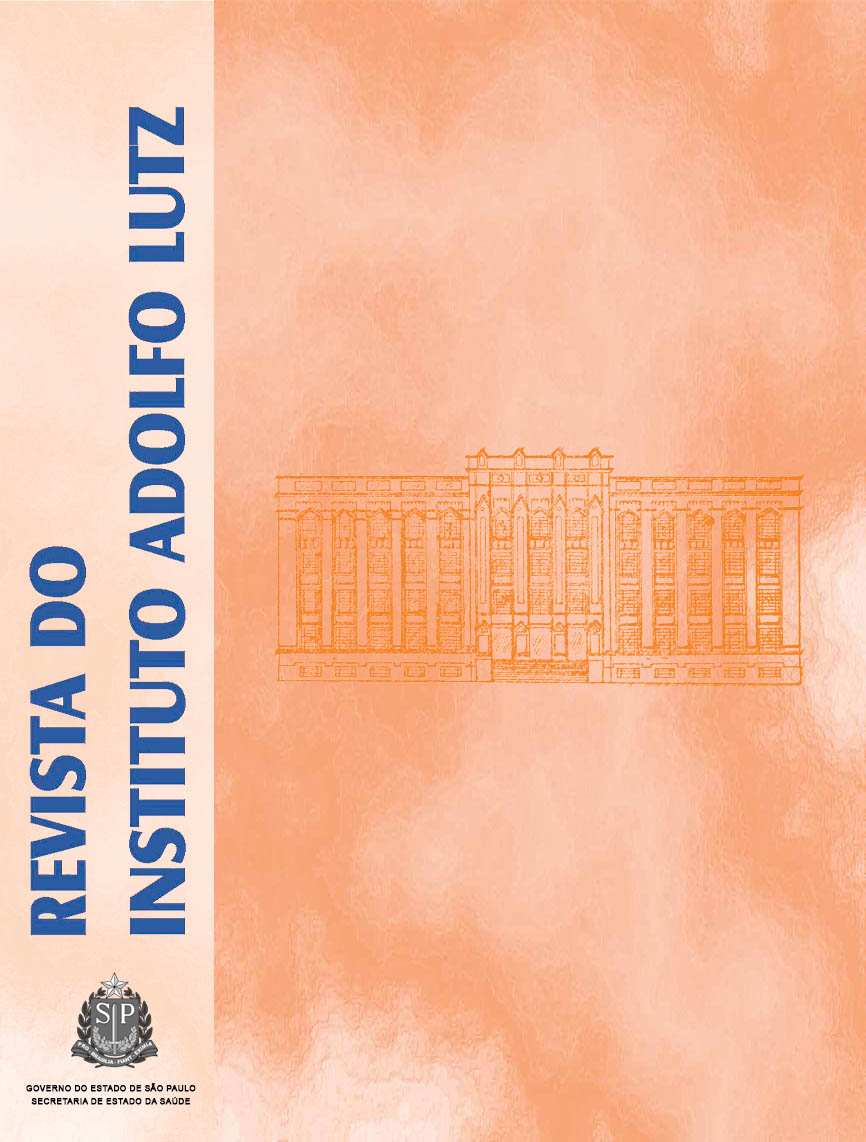Abstract
The ovicidal activity (type 3 effect) of fungi Pochonia chlamydosporia (VC1 and VC4 isolated) and Paecilomyces lilacinus (PL1) on Taenia saginata eggs was compared in an experimental trial. T. saginata eggs were fixed onto Petri dishes containing 2% water-agar (2% WA) and fungal isolates, and onto Petri dishes without fungus as control. The ovicidal activity of these fungi was evaluated after being incubated for 5, 10 and 15 days. From the beginning of the interaction to the end of the trial, both P. chlamydosporia (VC1 and VC4) and P. lilacinus (PL1) fungi demonstrated ovicidal activity (p<0,05) when compared to the
control. However, after 15 days of incubation the P. lilacinus fungus showed higher ovicidal activity (effect of type 3) when compared to P. chlamydosporia. This study showed that both fungi P. chlamydosporia (VC1 and VC4) and P. lilacinus (PL1) are capable in killing eggs of T. saginata, therefore these fungi might be
considered as potential candidates for biological control of this cestoda.
References
1. Jongwutiwes S, Putaporntip C, Chantachum N, Sampatanukul P. Jejunal perforation caused by morphologically abnormal Taenia Saginata infection. J Infect. 2004; 49:324-8.
2. Lateef M, Zagar SA, Khan AR, Nazir M, Shoukat A. Successful treatment of niclosamide- and praziquantel-resistant beef tapeworm infection with nitazoxanide. Int J Infect Dis. 2008; 12:80-2.
3. Pereira MAVC, Schwanz VS, Barbosa CG. Prevalência da cisticercose em carcaças de bovinos abatidos em matadourosfrigoríficos do estado de Rio de Janeiro, submetidos ao Controle do Serviço de Inspeção Federal (SIF-RJ), no período de 1997 a 2003. Arq Inst Biol. 2006; 73:83-7.
4. Acha P, Szifre B. Zoonosis y enfermidades trasmissible comunes al hombre y a los animales. p. 989, 2006.
5. Gemmell MA, Lawson JR. Ovine cysticercosis: an epidemiological model for the cysticercosis. I. Free-living egg fase. In: Flisser A. Cysticercosis: present stage of knowledge and perspectives. New Cork. 1986;87-98.
6. Carrada-Bravo T. Teniasis-cisticecosis como problema de salud pública. Boletín Médico del Hospital Infantil del México. 1987; 44:427-34.
7. Rey L. Bases da Parasitologia Médica. Guanabara Koogan, Rio de Janeiro; 2008.
8. Organización Panamericana de La Salud. Epidemiologia y control de la teniasis/cisticercosis en America Latina: 1994, Washington.
9. Araujo JM, Araújo JV, Braga FR, Carvalho RO, Silva AR, Campos AK. Interaction and ovicidal activity of nematophagous fungus Pochonia chlamydosporia on Taenia saginata eggs. Experiment Parasitol. 2009; 121:338-41.
10. Araújo JV, Mota MA, Campos AK. Controle biológico de helmintos parasitos de animais por fungos nematófagos. Rev Bras Parasitol Vet. 2004; 13:165-70.
11. Braga FR, Araújo JV, Campos AK, Araujo JM, Carvalho RO, Silva AR et al. In vitro evaluation of the effect of the nematophagous fungi Duddingtonia f lagrans, Monacrosporium sinense and Pochonia chlamydosporia on Fasciola hepatica eggs. World J Microbiol Biotechnol. 2008a; 24:1559-64.
12. Braga FR, Araújo JV, Campos AK, Araujo JM, Silva AR, Carvalho RO et al. In vitro evaluation of the effect of the nematophagous fungi Duddingtonia f lagrans, Monacrosporium sinense and Pochonia chlamydosporia on Schistosoma mansoni eggs. World J Microbiol Biotechnol. 2008b; 24:2713-16.
13. Araújo JV, Braga FR, Araujo JM, Silva AR, Tavela AO. In vitro evaluation of the effect of the nematophagous fungi Duddingtonia flagrans, Monacrosporium sinense and Pochonia chlamydosporia on Ascaris suum eggs. Parasitol Res. 2008; 102:787-90.
14. Braga FR, Araújo JV, Araujo JM, Carvalho RO, Silva AR. Efeito do Fungo Paecilomyces lilacinus sobre ovos de Taenia saginata. Rev Soc Bras Med Trop. 2008c; 41:686-8.
15. Braga FR, Araújo JV, Carvalho RO, Silva AR, Araujo JM, Tavela AO et al. Ovicidal effect of nematophagous fungi on Taenia taeniaeformis eggs. World J Microbiol Biotechnol. 2008d; 25: 533-5.
16. Urquhart GM, Armour J, Duncan JL, Dunn AM, Jennings FW. Parasitologia Veterinária, 2nd ed. Guanabara Koogan, Rio de Janeiro: 1998.
17. Araújo JV, Santos MA, Ferraz S. Efeito ovicida de fungos nematófagos sobre ovos embrionados de Toxocara canis. Arq Bras Med Vet Zootec. 1995; 47:37-42.
18. Lysek H, Fassatiová O, Pineda NC, Hernández NL. Ovicidal fungi in soils of Cuba. Folia Parasitol. 1982; 29:265-70.
19. Ayres M, Ayres JRM, Ayres DL, Santos AS. Aplicações estatísticas nas áreas de ciências biológicas. 290pp. Brasília, 2003.
20. Braga FR, Ferreira SR, Araújo JV, Araujo JM, Silva AR, Carvalho RO et al. Predatory activity of Pochonia chlamydosporia fungus on Toxocara (syn. Neoascaris) vitulorum eggs. Tropic Animal Health Product. 2009; 42:309-14.
21. Silva AVM. Teníase e Cisticercose. In Neves DP, Melo AL, Linardi PM. Parasitologia Humana. 11 ed. Atheneu: São Paulo; 2005.

This work is licensed under a Creative Commons Attribution 4.0 International License.
Copyright (c) 2010 Instituto Adolfo Lutz Journal
